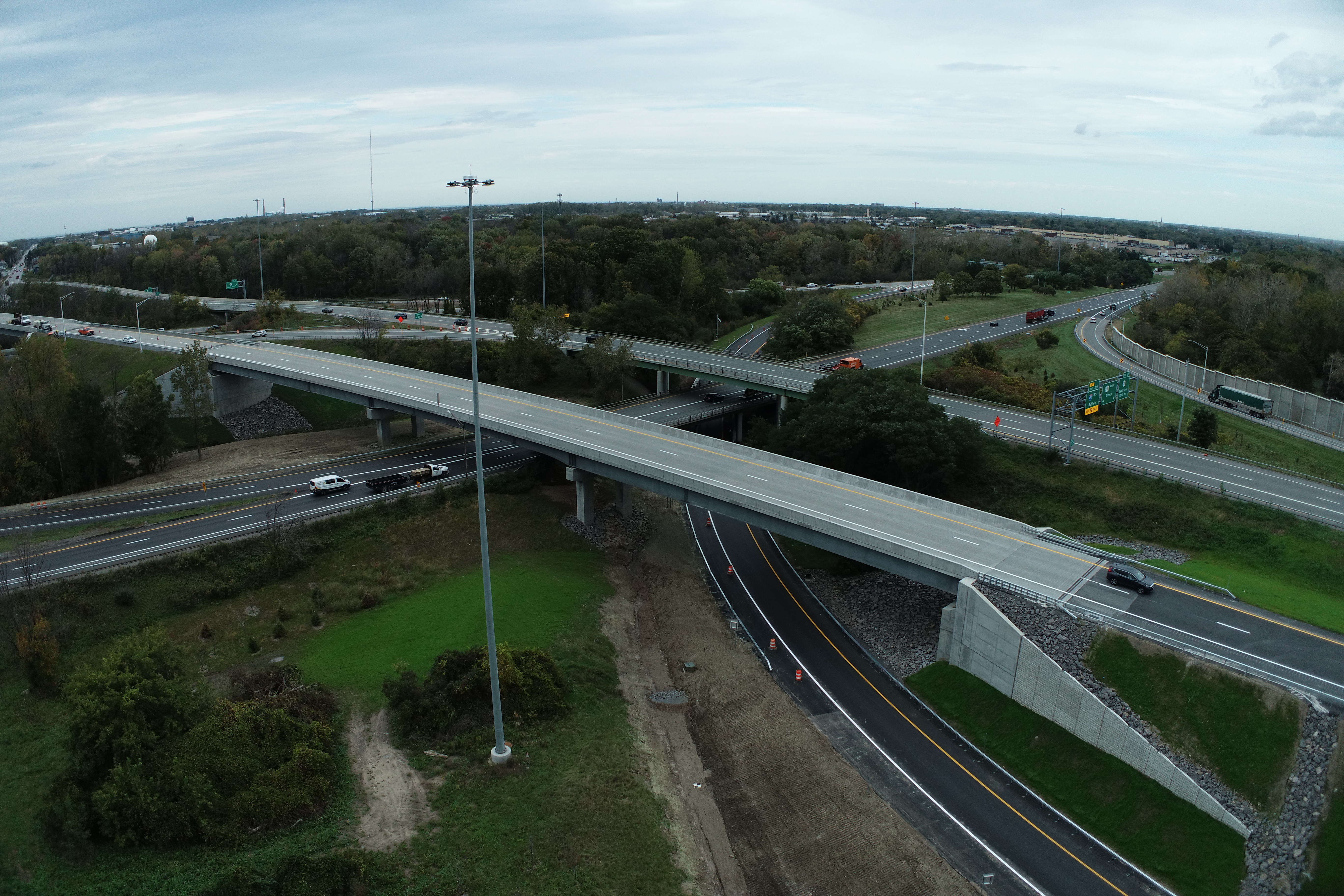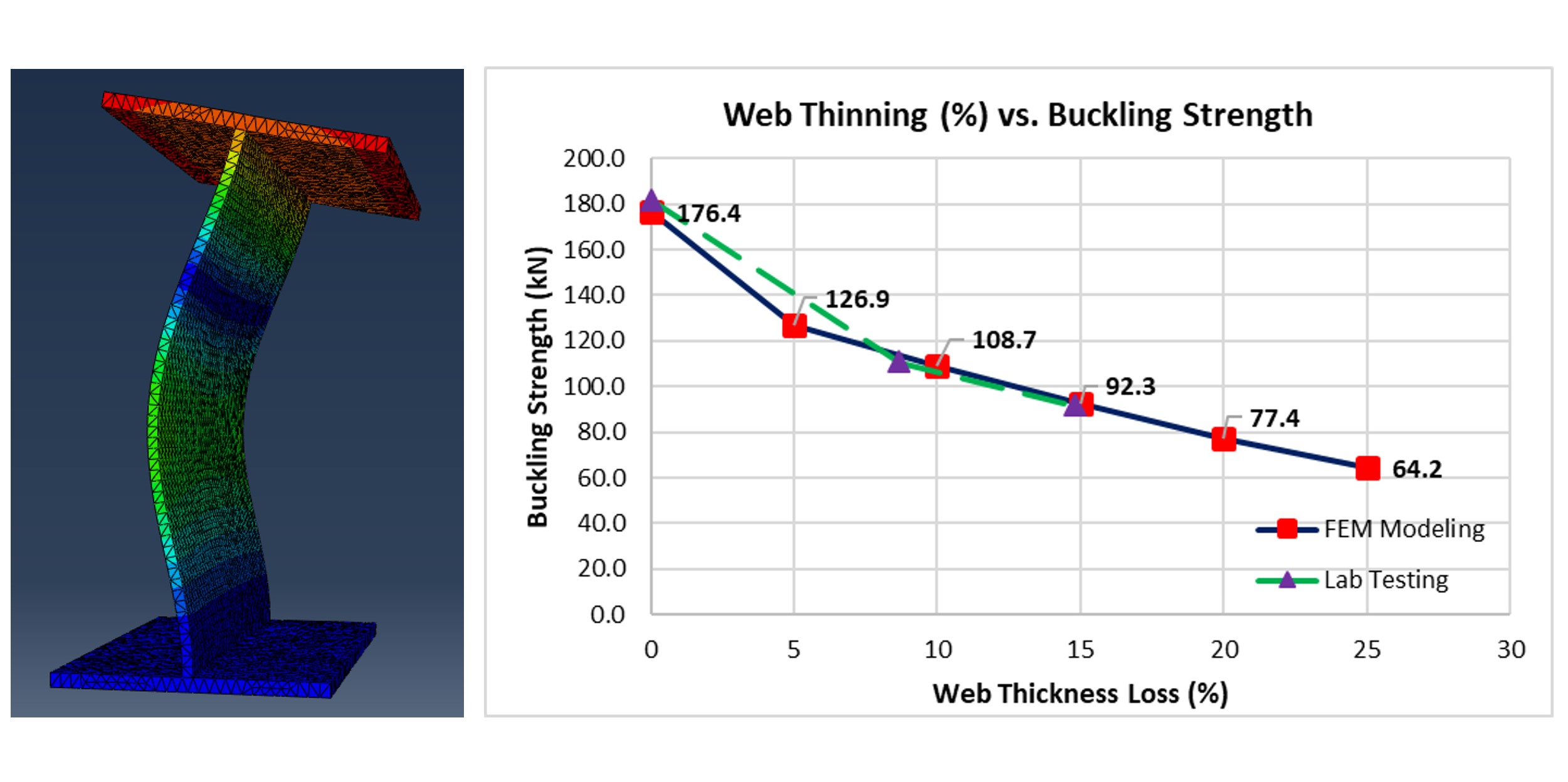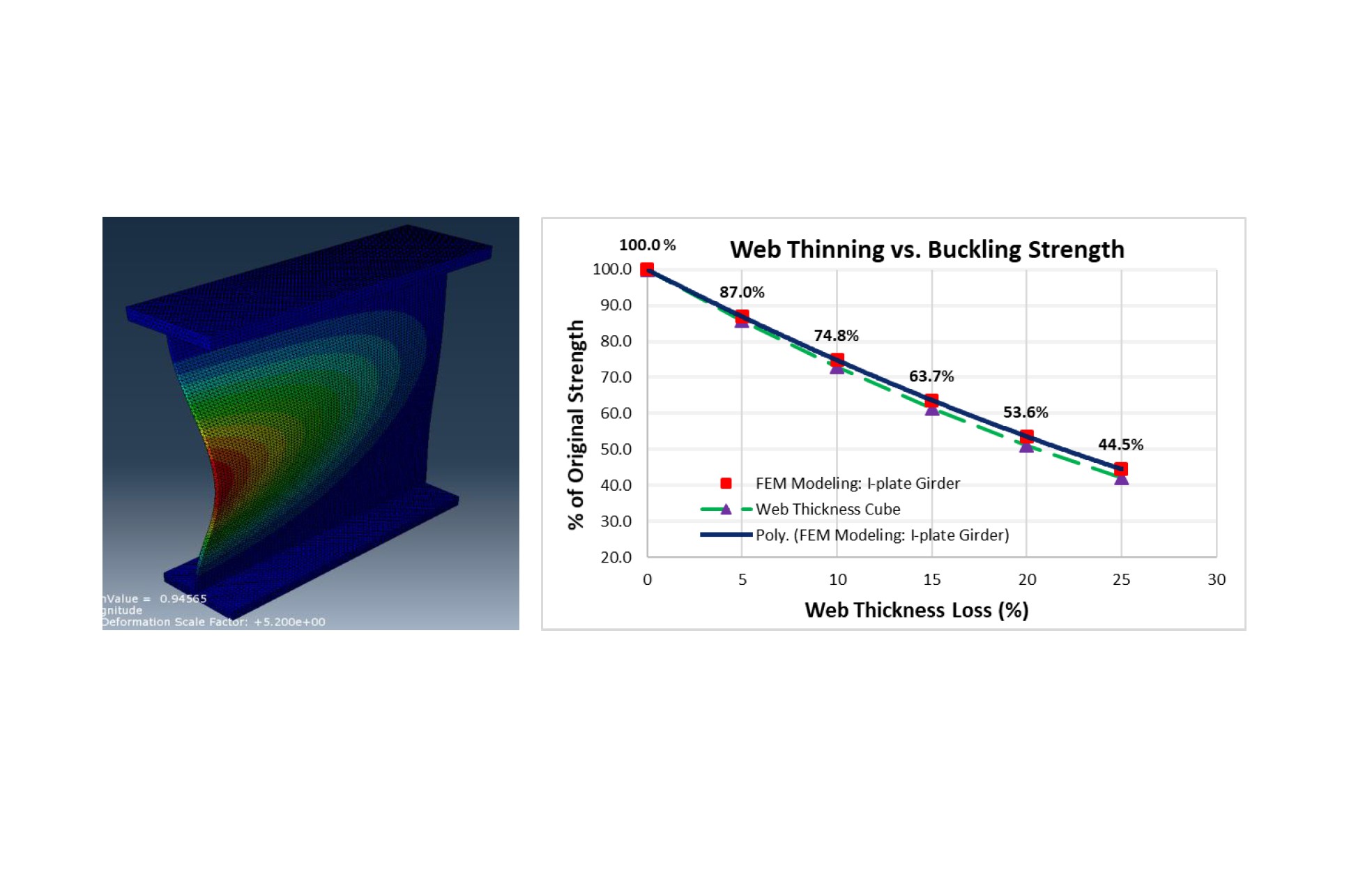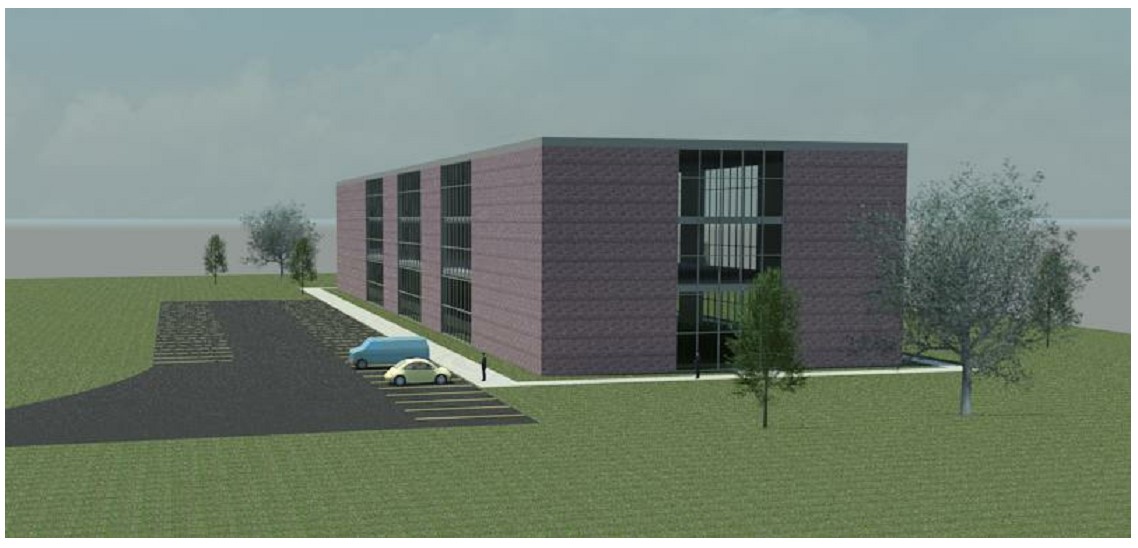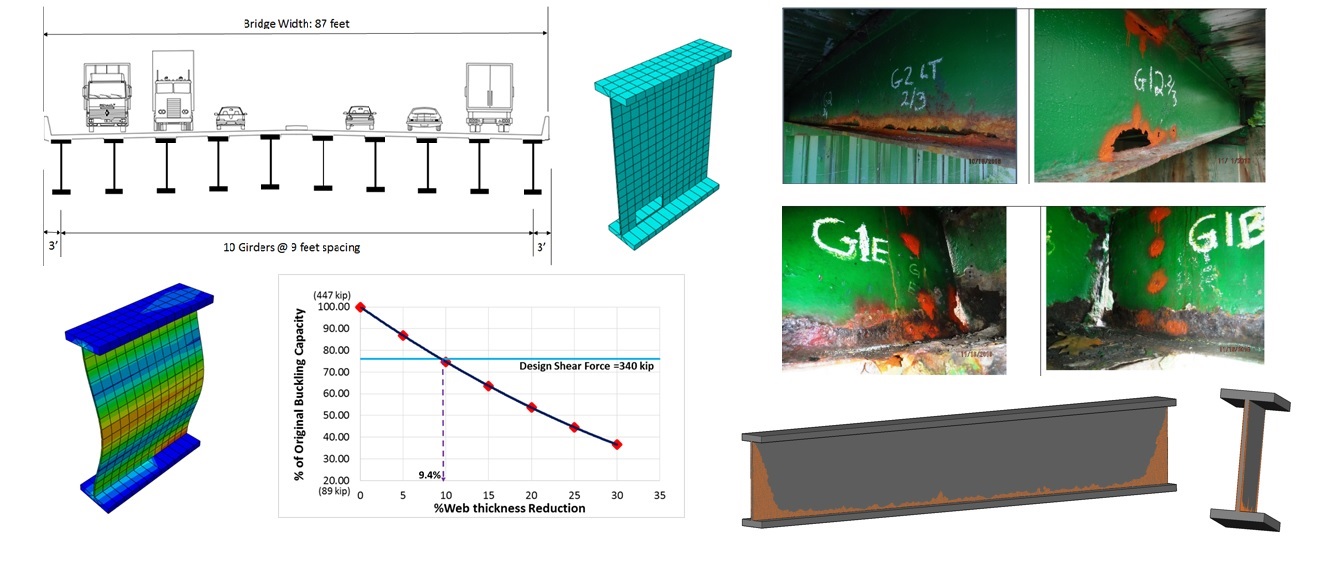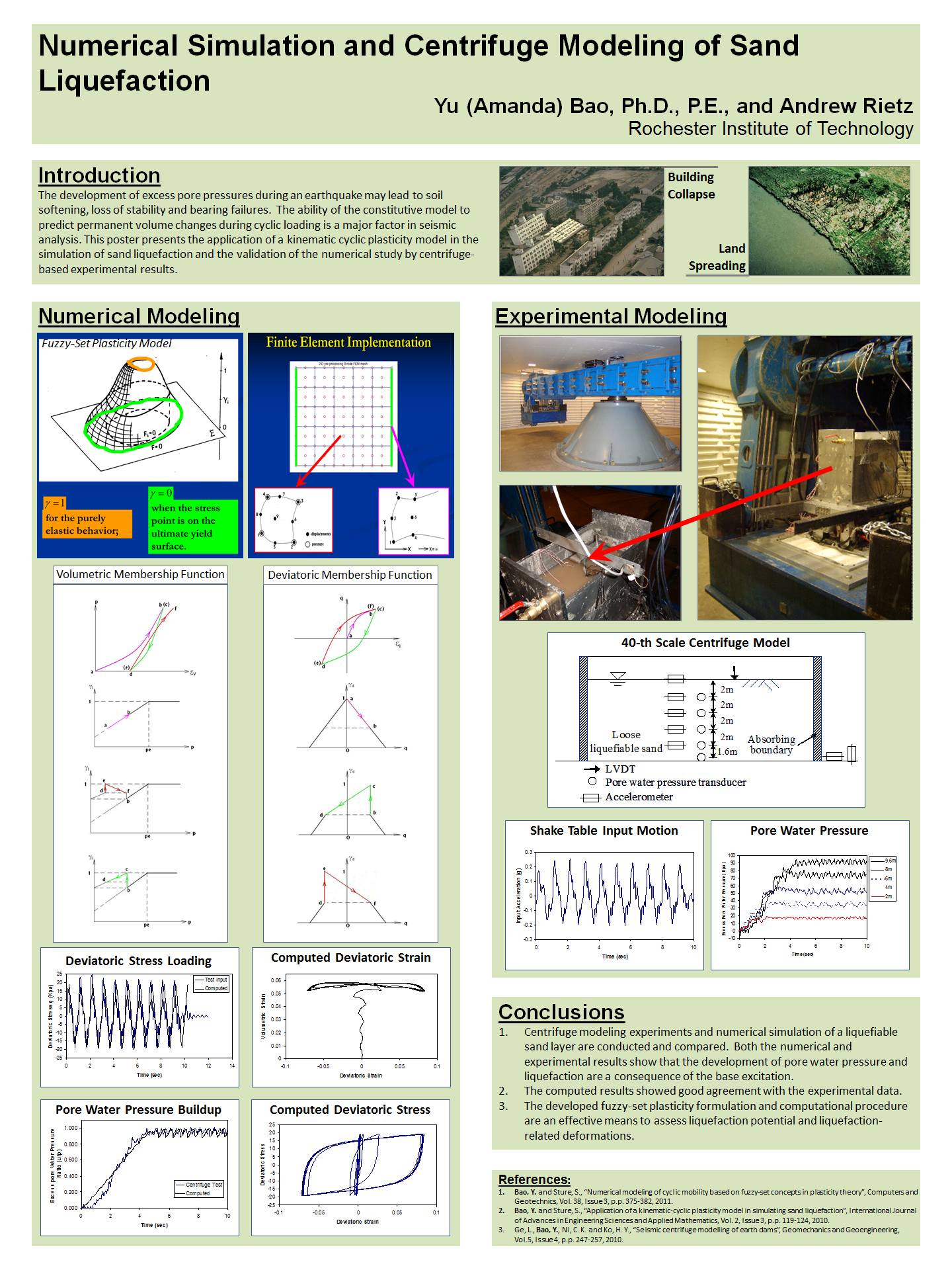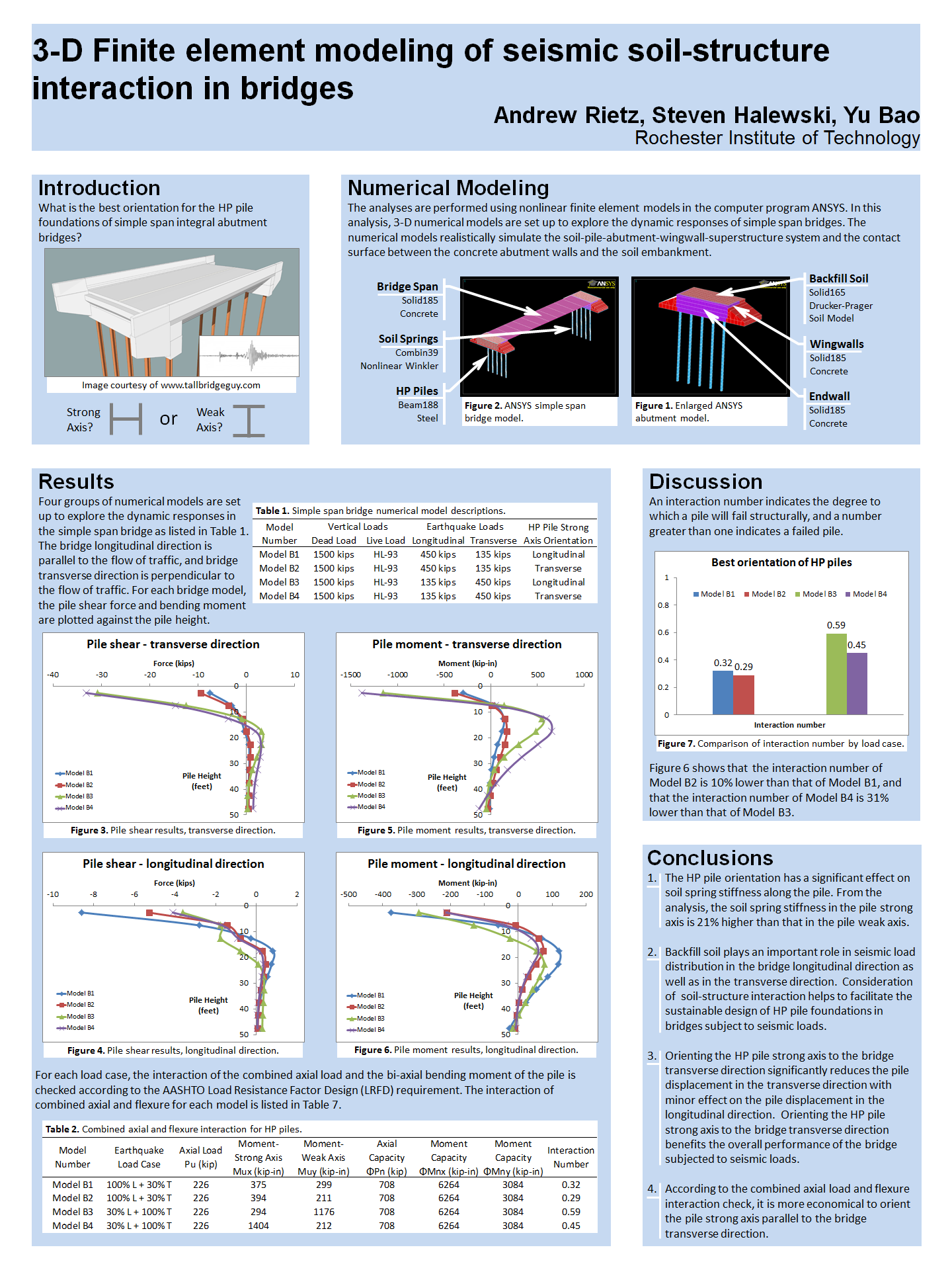Curved Integral Abutment Bridges
The advantages of simplifying the construction process, lowering maintenance costs and increasing bridge service life make integral abutment bridges the excellent alternative to conventional bridges. While integral abutment bridges have been widely implemented in the United States, some states still do not use them due to the uncertainties and concerns about subsoil conditions, structural behaviors of substructures and climates. In this study, the thermal deformations in the curved bridge are simulated by 3D finite element modeling. The soil-pile-structure interaction mechanism is investigated to understand the behavior of the curved fully integral abutment bridge subjected to thermal expansion and shrinkage. According to the results, design recommendations for curved fully integral abutment bridges will be proposed to facilitate further adoption of the cost-effective and low-maintenance integral abutment construction in horizontally curved bridge practices.
Testing and Evaluation of Deteriorated Steel Girders
Aging bridges have become an important issue in the United States. In this study, a quantitative relationship between corrosion condition and residual web bearing strength of I-plate steel girders is developed based on the laboratory testing and numerical modeling results. The findings in this study align with the observations from real-world bridge practice. The proposed table of web bearing strength reduction factors can be used as a reference for evaluating residual web bearing capacity of corroded steel girders in bridge loading rating.
Structural Resiliency of Structures Under Natural Disasters and Climate Changes
Resilience to natural disasters is of great importance for school buildings and infrastructure to ensure not only the safety of children and the quality of education, but also the economic and social growth for the broader community resilience. Advance preparation and sufficient knowledge of the structural capacity and rapid recovery of school buildings and infrastructure during and post natural disasters may enhance the community resilience.
Structural Capacity Analysis of Corroded Steel Girder Bridges
The most dominant deterioration form for steel bridges is corrosion, which is characterized by the loss of metal area resulting in reduction of structural capacity. Corrosion in steel multi-girder bridges is common in cold regions because of the frequent use of deicing chemicals during the winter season as well as leakage caused by bridge joint damage. At times, the rust is serious enough to disconnect the web from the flanges of the girder. This poses significant concerns for load capacity especially at girder ends. The consequences of bridge failure can be disastrous. This research investigates the structural capacity of these corroded steel girders. The mechanical behaviors of deteriorated girders are studied by 3-D finite element models built in ABAQUS and by lab testing. Our analysis is focused on web area loss and web thinning due to corrosion, and their consequences for load capacity reduction.
3-D Soil Structure Interaction
These studies are looking into the effects on soil as well as structural bridge members caused by a disaster. In any disaster, the largest concern is the civil infrastructure. Buildings must stay standing and roads need to be open for emergency personnel or evacuations. Part of the study looks into any bearing failures of loss in stability in the soil during an extreme loading. For a brief look into the task click the image below:
The other part of the study is how the bridge reacts. For a bridge to remain operational it must be able to act in an elastic manner to extreme loading as well as have little permanent displacement. A common foundation used in bridges is the HP piles. First the pile orientation was observed using the ANSYS finite element modeling program. This task is summarized in the image link below:
3-D models looking at single span, multi-span, and curved bridges are being built in the ANSYS program to find combined loads on the HP piles, reactions of the bolts, stress in the plates, and the response under extreme loading. This study will help in the future for more economical designs for bridges.
Nano-fiber concrete
This study compared attributes of concrete mixes using single-walled carbon nanotubes (SWNT) multi-walled carbon nanotubes (MWNT) as well as the use of micro-synthetic fibers. Images of the Carbon Nanotubes can be seen here:
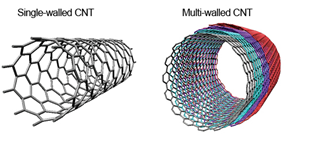
In this study, a simple concrete mix was observed by itself, with micro fibers, with MWNT, and a mix of MWNT and fibers. The first factor looked into was the concrete strength in compressive tests. Then using Scanning Electron Microscope (SEM), the concrete microstructures were observed. The SEM is able to produce nanoscopic images for comparison. Examples of these images are shown below:
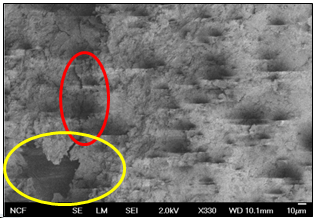

The study compared the compressive and buckling strength, stiffness, cracking patterns, microstructures and cost. This investigation has applications in bridges, roadways, pipes, precast/prestressed concrete structural members, where strength as well as cracking control is critical.
Teaching Innovation
Most civil engineering students consider courses in the structural engineering discipline challenging because these courses usually contain complex mathematics and mechanics. In our classroom practice, new interactive learning materials-screencasts were prepared to supplement the traditional lectures, allowing students to watch at their own pace. The screencasts include detailed solutions to example problems and instructions of how to use a piece of software. With screencasts, students will be able to follow the instructor’s explanation and also read captions broken down each step of the problem in order to understand the problem in greater depth and how the problem relates to the underlying concepts.
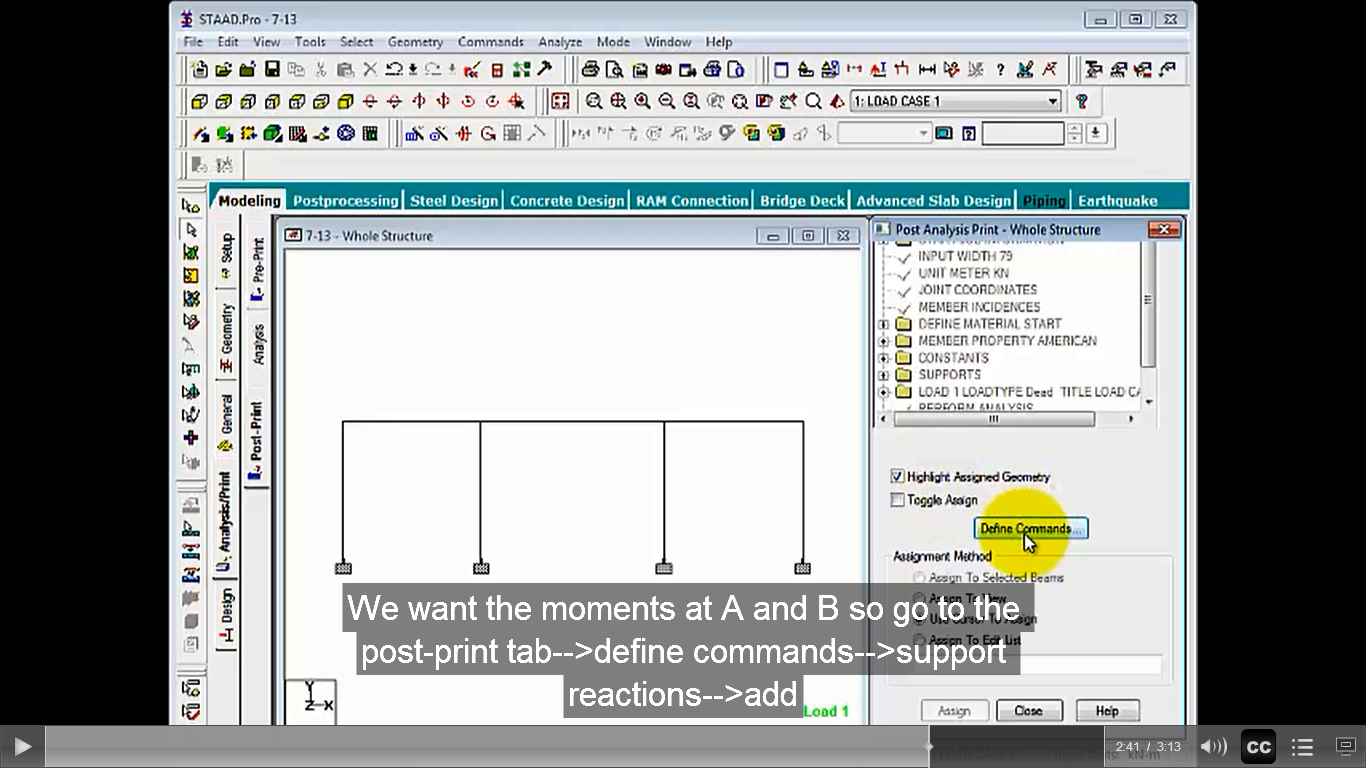
Active Learning in Structural Dynamics
The research objective of this project is to create a new hand-on shake table testing module to improve students’ learning effectiveness and enhance students’ interests in theoretical dynamics topics. Dynamics is a core course in Civil Engineering Technology. The principles of dynamics apply to civil engineering practices in the areas of roadway design, bridge design, structural design and seismic design. Students should have a functional understanding of the materials rather than substitute numbers into equations. The learning outcomes include understanding basic vibrations and dynamics terminology, such as natural frequency, period and damping, and modeling structural systems using single-degree-of-freedom (SDOF) models.

